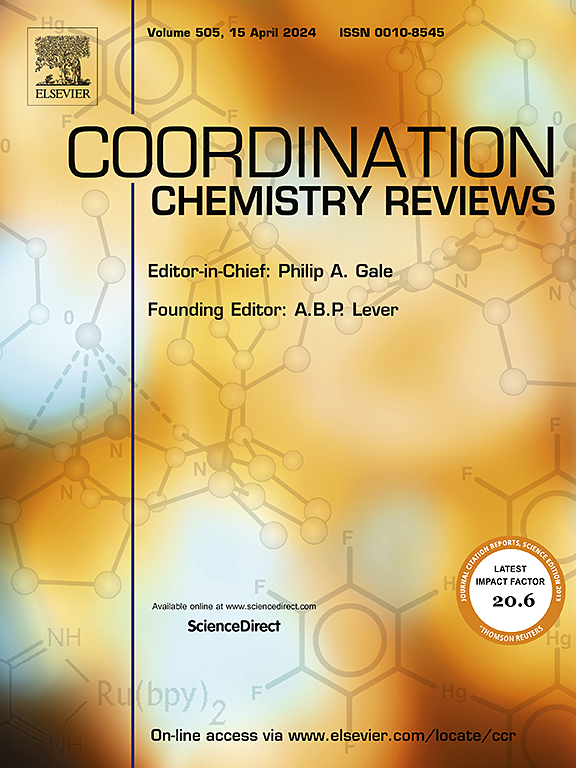过渡金属-氧配合物:理论如何影响反应性
IF 23.5
1区 化学
Q1 CHEMISTRY, INORGANIC & NUCLEAR
引用次数: 0
摘要
金属-氧配合物在自然界中普遍存在;这些结构基序是支持所有生命的关键反应的核心,从氧气从水进化到小分子的功能化和氧化。人们对这些配合物的电子结构进行了大量的研究,并对结构-活性关系进行了敏锐的观察,根据配合物的氧化态、配体结构和几何形状,金属-氧基的大部分化学反应可以归结为酸碱(或亲电-亲核)化学反应。本文综述了金属氧化物及其各种性质、在化学转化中的重要性和潜在的应用。在前半部分,我们详细介绍了金属氧化物的电子结构——分子轨道理论、轨道重叠分析和单电子激发的能量学。在第二部分,我们将基本理论应用于两个对现代化学研究至关重要的反应:水氧化和有机分子氧化。通过结构无机化学的镜头(在本综述中详细介绍),我们可以看到如何以直观的方式将基本理论转化为复杂的反应性。本文章由计算机程序翻译,如有差异,请以英文原文为准。
Transition metal-oxo complexes: how theory influences reactivity
Metal-oxo complexes are ubiquitous in nature; these structural motifs are central to key reactions that support all life, from the evolution of oxygen from water to the functionalization and oxidation of small molecules. There has been a significant amount of research into the electronic structure of these complexes with a keen eye on structure-activity relationships, and much of the chemistry by metal-oxos can be distilled down to acid-base (or electrophile-nucleophile) chemistries based on the oxidation state, ligand architecture, and geometry of the complex. Herein, we review metal-oxos and their various properties, importance in chemical transformations, and potential applications. In the first half, we detail the electronic structure of metal-oxos––the molecular orbital theory, orbital overlap analysis, and energetics of one-electron excitations. In the second, we apply the fundamental theory to two reactions crucial to modern chemistry research: water oxidation and organic molecule oxidation. Through the lens of structural inorganic chemistry (detailed in this review), we can view how the fundamental theory can be translated to complex reactivity in an intuitive way.
求助全文
通过发布文献求助,成功后即可免费获取论文全文。
去求助
来源期刊

Coordination Chemistry Reviews
化学-无机化学与核化学
CiteScore
34.30
自引率
5.30%
发文量
457
审稿时长
54 days
期刊介绍:
Coordination Chemistry Reviews offers rapid publication of review articles on current and significant topics in coordination chemistry, encompassing organometallic, supramolecular, theoretical, and bioinorganic chemistry. It also covers catalysis, materials chemistry, and metal-organic frameworks from a coordination chemistry perspective. Reviews summarize recent developments or discuss specific techniques, welcoming contributions from both established and emerging researchers.
The journal releases special issues on timely subjects, including those featuring contributions from specific regions or conferences. Occasional full-length book articles are also featured. Additionally, special volumes cover annual reviews of main group chemistry, transition metal group chemistry, and organometallic chemistry. These comprehensive reviews are vital resources for those engaged in coordination chemistry, further establishing Coordination Chemistry Reviews as a hub for insightful surveys in inorganic and physical inorganic chemistry.
 求助内容:
求助内容: 应助结果提醒方式:
应助结果提醒方式:


